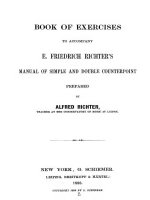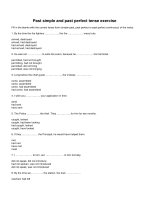Simple and compound sentences
Bạn đang xem bản rút gọn của tài liệu. Xem và tải ngay bản đầy đủ của tài liệu tại đây (10.94 KB, 1 trang )
Simple and Compound Sentences
According to their meaning and word order, sentences are divided into four classes – assertive, imperative,
interrogative and exclamatory. But according to their clause structure, sentences can be divided into four
different kinds – simple, compound, complex and compound-complex.
The Simple sentence
Look at the following sentences.
The sky is blue.
The cow gives milk.
The sports meet will be held tomorrow.
These sentences have only one subject and one predicate each. A sentence which has only one subject and one
predicate is called a simple sentence.
The Compound sentence
Read the following sentences
He went to the airport and boarded the evening flight.
You can have tea or coffee.
He went to the store, bought some books and came back.
The sentence 1 has two parts: He went to the airport and he boarded the evening flight joined by the coordinating
conjunction and. Each part has its own subject and predicate and therefore each is a clause. Moreover, they are
clauses of equal rank or importance, independent of each other. Such clauses are called co-ordinate clauses.
Sentence 2 is a combination of two independent clauses of equal rank: you can have tea and you can have
coffee, joined together by the coordinating conjunction or. Sentence 3 has three independent clauses of equal
rank – He went to the store, he bought some books, he came back – and these are joined together by the
coordinating conjunction and.
A sentence which has two or more coordinate clauses is called a compound sentence.
Stay on top of your writing! Download our grammar guide from www.englishgrammar.org to stay up-to-date.
Powered by TCPDF (www.tcpdf.org)









